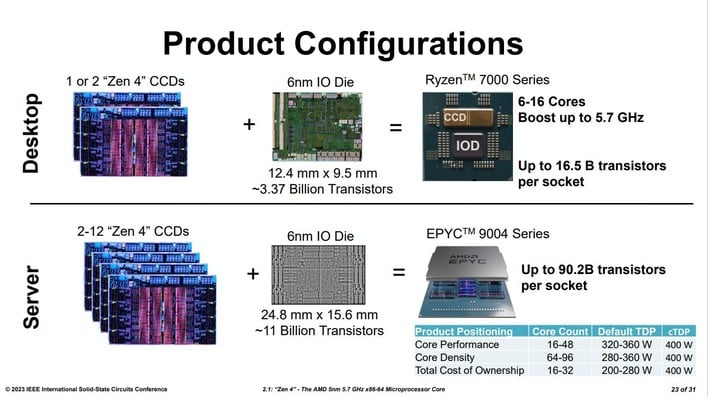AMD's Zen 4 I/O Die Shot Reveals A Fascinating Ryzen CCD Detail
There are a few interesting details, though. First and foremost among them is that the chip really does only have two GMI3 ports. GMI3 is the interface used to connect the CCDs—the Core Complex Dice that host the Zen 4 cores—to the cIOD. That means that you couldn't use the extant cIOD to handle more than two CCDs, contrary to past rumors that AMD was pondering such a processor.
Aside from that, the only other interesting detail is just how much space the graphics hardware takes up on the cIOD. While the single RDNA 2 WGP is quite small, there's still the display control block, the AMD VCN video codec block, and the audio DSP. In total, nearly half of the die is occupied by graphics and audio functions.
With this information at hand, it seems clear that if you want a desktop AMD CPU with more than 16 CPU cores, you're either going to have to snag a Threadripper or EPYC CPU, or simply wait for a later generation when AMD finally bumps the core count per CCD. That may happen with Zen 5, which is rumored to adopt a similar heterogenous processing approach to Intel's 12th- and 13th-generation Core processors.




